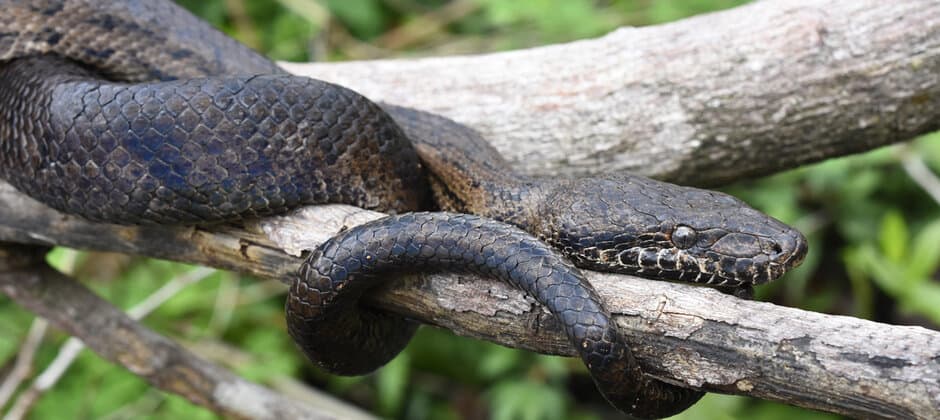Share this article
Urbanization may lead to Puerto Rican boa decline
Increasing urbanization in Puerto Rico may cause declines in the territory’s endangered boa population.
The Puerto Rican boa (Chilabothrus inornatus) is the largest snake found on the island, growing up to 1.5 meters long. The constrictors are found widely across the island and prey on a variety of rodents, frogs, lizards and birds. They are even known to hang around cave mouths where bats roost, snatching the flying mammals out of the air as they pass. These boas have been listed on the Endangered Species Act since 1970, largely due to territory loss and other impacts associated with increasing urbanization in Puerto Rico.
“Urbanization encapsulates a whole suite of threats,” said Anna Tucker, a research biologist with the U.S. Geological Survey. Threats can include habitat loss — boas thrive in trees, which are often cut down during development. Boas are also persecuted by people who kill snakes they perceive as threats. Increased road kill of snakes is also associated with urbanization, and feral or domestic cats may also prey on smaller, younger boas.
The species is thought to have recovered over the half century since its listing, said Tucker, who was a postdoctoral research with Auburn University at the time of the research. But she and her colleagues created a population viability analysis as part of a larger population assessment the U.S. Fish and Wildlife Service conducts every five years on endangered or threatened species.

The constrictors are found widely across Puerto Rico. Credit: Jan P. Zegarra
They examined previous research on the home ranges of individual snakes taken from telemetry studies. The researchers also looked at data on population density and habitat suitability for Puerto Rican boas.
In a study published recently in Animal Conservation led by Tucker, the team compared this data to research examining the rate of urbanization on Puerto Rico, projected into the future under different scenarios.
Their models showed that if urbanization continues at the same rate as the past decade, there is a 60% probability that Puerto Rican boa populations will decline.
“If urbanization continues at the current pace, then we expect the species to decline,” Tucker said. The work was included in the recent Species Status Assessment, a process used to support decision making under the Endangered Species Act.
Header Image: Puerto Rican boas may decline due to increasing urbanization. Credit: Jan P. Zegarra








